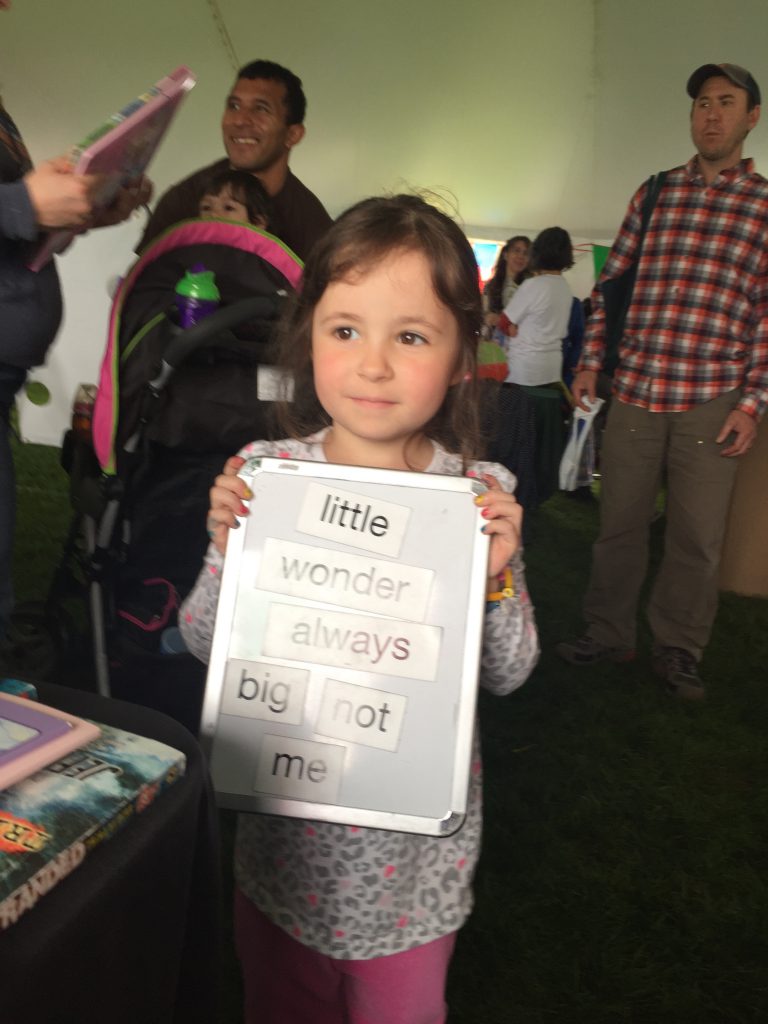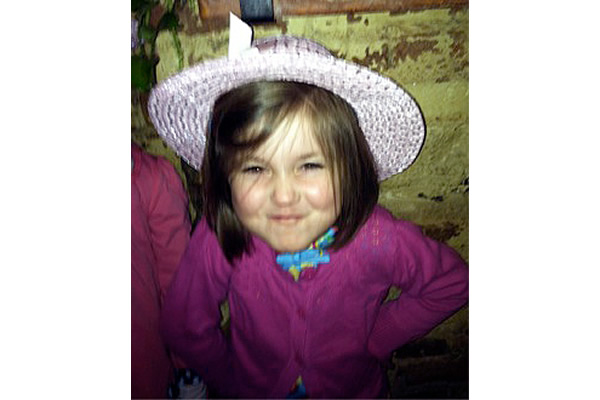
Your home offers a treasure chest of reading enrichment opportunities. Keep books and other reading material (e.g. newspapers, magazines, graphic novels or comics, etc.) scattered around the home.The bonus: All of these opportunities can involve each and every member of the household. Here are a few ways to turn your home into a print-rich environment.
Where does your family spend the majority of time together? Let’s start in the kitchen, where many families spend most of their time while at home. Letter magnets on the refrigerator door can help children learn the alphabet. You can also find cheap make-your-own magnets at most craft stores and you can find endless ideas for getting creative on sites like Pinterest. Encourage your child to play with the letters, write his or her name, and make words. Whole word magnets like these are also available. Your child can create messages, sentences, or other complete thoughts. Remember to keep the magnets low and at your child’s height. This will make them easier to use, and if they are easier to use, then they will more likely be used.
Making Magnetic Poetry with CLiF at Burlington Kids Day, May 2017
Cereal boxes can be another great opportunity for reading and discovering new words. Keep the boxes on the kitchen table during breakfast. Children tend to be excited by the colors and characters on the boxes. Most cereal boxes have reading opportunities galore, including stories, games, activities that involve reading challenges, and puzzles. In addition to the reading on the box covers, consider sending away for some of the free offers. The entire activity will reinforce reading for a purpose, responding through letter writing, and addressing an envelope.
Shopping lists promote both reading and writing. Recognize, though, that there’s no need to make this too difficult. Spelling needn’t count. Why? It is better to read and write than not to read and write at all. For example, for a beginning reader trying to put together the words “tomato soup,” it might be best to accept “tmto sop” rather than insisting on correct spelling, and then resulting in someone not so enthusiastic about helping with the shopping lists in the future. On the other hand, a stronger reader might be enticed into putting together “apple pies” or “pumpkin pies” correctly if it would mean she could get some of the treats.
Recipes can also be a great way to practice reading. Try a new recipe, or an old favorite, and have your kid(s) read the ingredients and instructions out loud. If you want to try something new, you can research recipes together from cookbooks, the internet, or your local library.
Who does most of the reading in your home (not just books, but notes, instructions, the mail, etc.)? Is it the adults? Can your child do some of that reading instead? Take the time and remain patient. Give your child the extra seconds to work through the reading. Count to ten on your fingers behind your back or under the table. Sometimes when adults think a child is stuck on a word, the child is not really stuck, but is thinking carefully and processing through some word attack or other reading strategies.
Dinnertime (or any meals the family eats together) provides a perfect opportunity for sharing. Invite family members to take something to read-aloud before, during, or after the dinner, and take turns. Short passages work best. Consider Mother Goose rhymes, poems, limericks, short newspaper articles, famous sayings, comics, jokes, and tongue twisters. For an extra special night, make an attempt to create some original poems.
Mealtimes together are also perfect opportunities for family discussions. The words you use will increase vocabulary knowledge. Try to use some words that are just above your child’s vocabulary level. A child might say something like: “The leaves on the trees look good.” You can rephrase that with something more specific like: “The leaves on the trees are colorful.” Try to encourage your child to use that “colorful” word too. When your child sees that word in print for the first time, your child will say, “I know that word!” As your child’s reading skills improve, encourage them to look up words they don’t know in the dictionary (online dictionaries can be useful if you don’t have access to a print dictionary in your home).
The dining or kitchen table is also a perfect place for making models, setting up projects and craft, or playing games. Be sure to encourage your child to read all of the directions first, follow the patterns, and begin. Board games offer reading material, too. Not only do children read the directions to find out specific information, such as how to play the game, but when playing, those same children often read special cards, follow a sequence, recognize cause and effect, make inferences, and so on. These are all reading related skills necessary to become a successful reader.
While most experts recommend limiting screen time for kids (especially for children two years old and under), some guided TV or computer/iPad/phone time can be useful to learning. Is your second grader learning about dinosaurs in school? Watch something about dinosaurs on TV (or on the computer or phone), and then head to the local library to find research books and learn more. Is there something interesting on PBS, a science or history station? Watch and then head to the local library for more information. The visuals may actually help a reader to comprehend and remember better. Educational podcasts like VPR’s But Why: A Podcast for Curious Kids and other free podcasts like these that you can download to your phone or device and listen to in the car, while traveling, or during any downtime, can be a great learning resource. Encourage your kids to learn more about a topic that interests them at the library, online (with your guidance), or wherever else they have access to books and information (at school, at an afterschool or summer program, etc.)
Do you have a child who is learning letters? Ask your child to find the letters in his or her name in the newspaper or a magazine and circle those letters. Do you have an older child trying to increase vocabulary? Challenge him or her to find a new word each day and circle that word, then use it in conversation. Follow through by challenging all members of the family to use those new words too.
Believe it or not, the bathroom is another place to promote reading skills. Write a post-it note to your child and attach it to the bathroom mirror. Or use window crayons or wipe-off pens and write directly on the mirror. Your child will have fun reading the message while brushing his or her teeth. Simple messages like “Have a great day at school,” “Good luck on the science test,” or “Thinking of you,” mean a lot to children. And for some good clean fun, read to your child while he or she is taking a bath (there are waterproof books designed just for this).
Does your child have a bookshelf? Children who have a choice of books available will more likely pick up one of those books and read. Help your child to fill and organize the bookcase with appropriate materials or interesting books (such as from the library, book sales, or from organizations like CLiF: Check the calendar to find storytelling events and book giveaways near you!). You can also use boxes to build your book shelf.
Many outside games can be modified into reading games. Have you ever played a basketball game called Horse? This is where one person makes a shot, and then the opponent has to make the same shot from the same spot. If they missed the shot, the opponent gets the letter h. The next time the opponent gets an o. The next time an r, s, and e, and the game is over. You can substitute the word horse with spelling or vocabulary words. Younger children can practice word families such as bat, cat, and sat.
Spending a lot of time in the car? Here’s a sign game, appropriate for most any age level, which requires collecting the letters of the alphabet. Start with the letter A and try to find a sign that has a word that begins with that letter or simply a word that contains that letter. Once the player has the letter A, the player then goes onto the letters B and C. You may be surprised in an hour long trip how close you can make it to the end of the alphabet. Modifications may need to be made for the letters Q, X, and Z.
Finally, remember to take a “flood book” with you wherever you go. This is a book on hand for whenever there is a “flood” or something unexpected that leads to a free moment, such as waiting in line someplace, waiting for a friend to be ready, waiting for something to start, waiting for a thunderstorm to pass, and waiting at the doctor’s office. Follow the Boy Scout motto and always “be prepared.” If you don’t have a book with you, pointing out letters and words on signs, posters, and any other reading material is helpful practice, too.
Reading Around the Home
Kitchen
Letter and Word Magnets
Cereal Boxes
Shopping Lists
Dining Room/Table
Read Poems Out Loud
Colorful Discussions
Games
Living Room
TV Specials
Computer Games
Newspaper/Magazine Activities
Bedroom
Bookshelves
Bedtime Reading
Bathroom
Mirror Notes
Reading in the Bathtub
Outside Games
Basketball Horse
Point Out Signs/Flyers, etc.
Car
Trip Planning/Collect Brochures & Materials from Places You Go
Sign Games
And remember: bring reading materials with you, and point out found words, wherever you go!
Bruce Johnson is an educator, reading specialist at the Merrimack Valley School District in New Hampshire, member of CLiF’s Advisory Board, and author of Helping Your Child Become a Successful Reader: A Guide for Parents. Learn more at www.guidesforparents.wordpress.com.







Yes, yes, yes! And last week I was delighted to see two different parents reading to children on the beach!